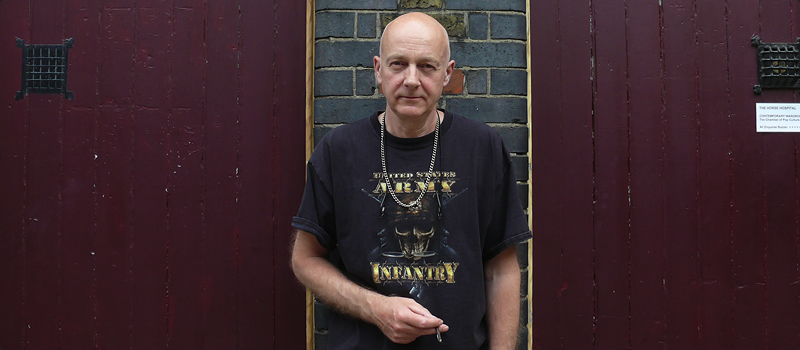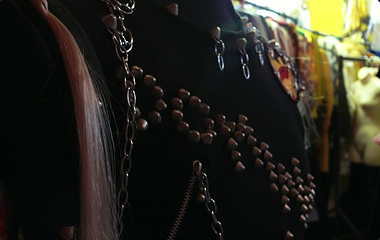STREET WEAR HISTORY
The guard of culture 'Roger K. Burton' talks about
the history of British Youth fashions
08 11/5 UP
Text:Andrew Bunney Translation:Mayumi Horiguchi

- A :
- How did it shift from a Hippie style to Rocker and Punk?
- R :
- I think the two ran alongside each other really. There was a great hunger for nostalgia and my generation had been brought up on Americana on TV and film in the 1950’s and early ’60’s. This whole world of youth culture looked amazing. The ’50’s thing started to creep in, a lot of interest in ’50’s music, so one started to get into varsity jackets. I remember wearing a satin baseball jacket, which was akin to wearing a woman’s blouse at the time.
There was always a small scene that wanted to wear the originals, but Tommy Roberts made it palatable for the fashion press by reproducing it – bright colour jackets, letterman sweaters that kind of thing. Mr Freedom opening up really shocked people. It was like a mini revolution.
English people never really liked second-hand clothes, even if you were wearing them in a chic way. I remember there was a book that came out called Cheap Chic that excused the fact that people wore second-clothes… my mother was horrified that I was wearing second hand clothes - "wearing dead-mans shoes!"(n.4)
- A :
- How did Punk appear from this?
- R :
- I think it evolved as a backlash against hippie. In perspective, if you look at TV programmes at the time, newscasters have got long hair and fat ties and big collared shirts and looking back it is shocking that it was the norm, but more shocking was to see kids with severe haircuts or shaved heads – they really stood out. Kids being kids wanted to go further and further. There was a lot of aggression at the time, hate for the government.
I was happily buying and selling vintage clothes on a big scale at the time, but there was more of a demand for pre-Mod, winkle-pickers, tight trousers but a bit effeminate – worn with a mohair sweater.
The new kids that would wear this were into a new soul scene that was going on Canvey Island, driven by the gay scene – gay kids had always driven the fashion scene.
There was a break-up with the soul/disco element and with the punk music that was appearing. There was an element of aggression that went with this, and along with shops like Seditionaries, Acme Attractions, Smutz, that fired kids up and captured their imagination.
n. 4: What does the expression "dead man's shoes" mean?;
It used to refer to a particular job, or position, that tends to be held for life (or at least until retirement at the latest possible age) by the people who hold it. In this connection, people in the Occident regard a shoe is a kind of clothing and wear it at home too. They think of it as natural not taking off their shoes until they go to bed.
- A :
- What was your relationship with the Punk shops?
- R :
- I was supplying authentic rockabilly styles to these stores.
It started of with a bit of a mixture – it was like supply and demand – they started off customising, then eventually began manufacturing. One can only get so many original pairs of peg pants in powder blue so places like Johnson’s and Acme would take inspirations from the old styles and would remake them in pastel pink. So it was a mixture, but the older stuff was getting harder to find. I had some very good Japanese clients with shops in Tokyo and Osaka and they were buying tons of stuff that wouldn’t fit English people, as it was smaller.

- A :
- Did Punk change anything?
- R :
- I think it did actually. It’s interesting that throughout youth culture movements there is always an element wanting to make a stand and say that you can be an individual in a group of similar people. Obviously that climaxed in Punk because kids did have a voice and could dress how they wanted within that Punk world. Then in a way they had done it… they couldn’t get any more extreme.
- A :
- What happened after?
- R :
- The thing that followed – the whole New Romantic thing – to me was revisiting all those old sub groups and mixing it up and making it more theatrical. But then it just becomes costume and meaningless really. I think from that time the New Romantic thing was a farce and killed the whole thing dead. There was obviously lots of little fashion things that happened since then, the only one that came from that time and is still going is the whole hip-hop thing, graffiti look, which has never really changed that much.


